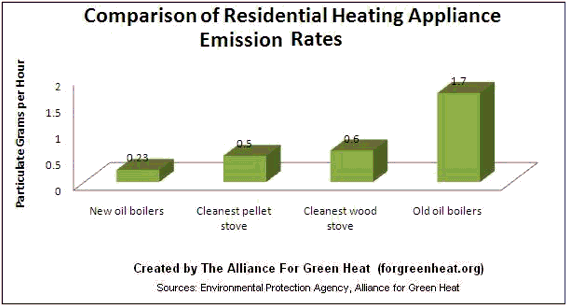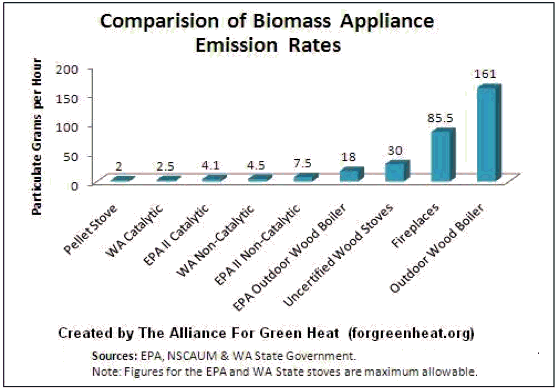Efficiencies and Costs | Tahoe Rates | Recommended thermostat settings
Typical Efficiencies and Costs
Energy Efficiency values:
| Eb | Heater | | Ew | Wood Heater |
| 0.65-.80 | Oil Furnace | 0.10 | Fireplace |
| 0.65-.85 | Natural Gas Furnace | 0.25 | Improved Fireplace |
| 1.00 | Electric | 0.25-30 | Nonairtight (Franklin) Stove |
| 0.65-.80 | LP (Porpane) Gas | 0.50-.65 | Airtight Stove |
| | 0.60 | Wood Furnace |
| | 0.65 | Airtight Stove with Catalytic Combustor |
Costs: (2004-05)
| Type | $/M BTU's | Unit | BTU's/unit | Cost/unit |
| Wood | $12 | Cord | 15-30 M BTUs/cord | $250/cord |
| Natural gas | $16 * | Therm | 100,000-110,000 BTUs per Therm | $1.71/Therm + $5/mo. primary home; $1.86/Therm + $6/mo. for Secondary home. |
LP gas | $24 | Gal | 92,000 BTUs per gal. | $2.18/gal. |
| Electricity | $26 | kWh | 3,413 BTUs per Killowatt Hour (kWh) | $.09/kwh + $4.50/mo. |
| Heating oil | $14 | Gal. | 136,000 - 141,000 BTUs / gal. | $2.00/gal. |
* Note Liquid Natural gas (LNG) prices have come down significantly. They were around $5.40 / therm in 2013. See LNG prices.
Note: Gas and Electric costs are for Lake Tahoe in the winter (2004-05), Heating oil is East Coast rate.
A 2 bedroom home at Tahoe would use from 3-5 M BTU's per month in Jan. plus 1 M BTUs for hot water for 3 people.
Therm = Approx. 100 cu. ft.
See terms below.
See: NASD Review: 04/2002.

The Alliance for Green Heat has created two easy references for woodstoves. The first compares the cleanest wood and pellet stoves on the market today to older and newer oil boilers (data on gas and electric is currently unavailble). The second graph compares the hourly emissions from most of the common residential biomass appliances. Wood and pellet stoves can be quite competetive in terms of emissions. Sep., 2010


Information for North Lake Tahoe
Southwest Gas
Use N. Nevada Contact for Lake Tahoe
See: How To Read Your Bill and
Southwest Gas Rates
The winter season (Nov. - Apr.) has different rates than the Summer.
A Primary home has a Baseline Rate and Tier II rate.
Baseline is amount of natural gas to meet the basic needs of the average home. (65 therms in Nov. 2004)
Sierra Pacific Power Rates
HVAC typically accounts for over 40% of your electrical bill.
You save 1-4% (depending on how cold the winters are where you live) for every 1° decrease in temperature.
You can save money by changing your thermostat when you are not home, but don't change it too much. It can actually cost you more because it also has to heat up the insulation when you get back.
Recommended thermostat settings
Room Temperature
| Home | Away |
| Day | Sleep |
| Heating |
| Range | 68-70 | 60-67 | 55-63 |
| Examples |
| Ecobee | 69-70 | 63-65 | 50 |
| Energy.gov | 68 | | |
| Cooling |
| Average | 78 | 82 | 85-88 |
Thermostats | Energy.gov
What is the Best Temperature to Set My Thermostat in the Winter? | Direct Energy
Warmer settings are recommended for homes with elderly and infants.
The Sleep Advisor says,
Adults 60-72
ELderly 66-70
Infants/Toddlers 65-70
See:
Temperature in Sleep Aids
Best Temperature for sleep
Recommended Thermostat Settings for Home Comfort
Thermostats | Department of Energy
Ecobee smart thermostat Comfort Settings used 63° as a sleep setting.
Best Setting for Your Central Air Conditioning - Consumer Reports
What Temperature Should I Set My Thermostat To? The Best Thermostat Settings | All Systems Mechanical (ASM)
- Keep your thermostat at 68°. Lower it at night and when you're away from home (55° lowest setting). You save 1-4% (depending on how cold the winters are where you live) for every 1° decrease in temperature. Warmer settings are recommended for homes with elderly and infants.
- Install automatic setback thermostats that adjust the heat to you schedule.
- Keep registers and cold-air returns clear of furniture and drapes.
- Close storm windows and latch them tight. Replace missing storm windows or install plastic film.
- Close drapes at night to keep heat in. Replace standard curtains with tight sealing, insulated or quilted window coverings.
- A dirty filter can add 10 percent to your heating costs.
- Put an interior cover on wall air conditioner units in the winter. Remove or cover window air conditioners.
- Fix water leaks. Wash clothes in cold water.
- Repair broken or cracked glass and putty old windows; check to see that windows close properly and window locks pull sashes together.
- Make sure doors close properly; repair or replace non-working doorknobs, latches and striker plates.
- Weather-strip windows, doors and attic accesses; caulk the frames around windows and doors from the inside using a clear, pliable caulk.
- If you have a fireplace, be sure the damper is closed when the fireplace is not in use.
- Caulk foundation cracks and openings. Make sure kitchen and bathroom vent dampers close properly.
- Install low flow showerheads and faucet aerators to save energy and water.
- Reduce your hot water heater temperature to 120-125 degrees
- Repair leaking hot water faucets, tanks and pipes. A faucet that leaks one drop of water each second wastes 200 gallons of water a month.
- Insulate water pipes. This will prevent the pipes from freezing and will save money on hot water heating costs.
- Have your heating system checked and cleaned regularly by a heating oil professional for fuel efficiency.
- Insulate attics (especially attics with less than seven inches of insulation), walls and flooring over unheated crawl spaces or basements.
- Install exterior storm windows, including cellar storm windows. For windows that are rarely opened, consider installing interior storm windows.
- If you plan to replace your present oil or gas heating system, select a high efficiency unit with an Annual Fuel Use Efficiency Rating (AFUE) of at least 82%. Many systems are too large for the space being heated resulting in a considerable waste of dollars.
- AFUE
- Annual Fuel Use Efficiency Rating
- Btu
- British Thermal Unit - The standard measure of heat energy. It takes one Btu to raise the temperature of one pound of water by one degree Fahrenheit at sea level. For example, it takes about 2,000 Btu to make a pot of coffee. One Btu is equivalent to 252 calories, 778 foot-pounds, 1055 joules, or 0.293 watt-hours.
100,000 BTU/therm
- CCF
- 100 cubic feet. Approx. 1 Therm (see Therm below)
- Kerosene
- Certain colorless, low-sulfur oil products that burn without producing much smoke. Kerosene cookers and heaters can be used indoors without a chimney or flue, but you must provide adequate ventilation. Kerosene is a popular fuel for camp stoves.
- kWh
- Kilowatthour: One thousand (1,000) watthours. The most commonly-used unit of measure telling the amount of electricity consumed over time.Ê It means one kilowatt of electricity supplied for one hour. The amount of electricity needed to light ten 100-watt bulbs for an hour.
- LPG
- Liquified Petroleum Gas (LPG): LPG is also called propane. A mixture of gaseous hydrocarbons, mainly propane and butane that change into liquid form under moderate pressure. LPG is commonly used as a fuel for rural homes, where it is stored in large outdoor tanks, for space and water heating, and as a fuel for barbecues and recreational vehicles.
- LNG:
- Liquified Natural Gas (primarily methane, CH4)
- MCF:
- 1,000 Cu ft = Approx. DTH (decatherm) = 10 Therms
- Natural Gas:
- A mixture of hydrocarbons and small quantities of various nonhydrocarbons existing in a gaseous phase or in solution with crude oil in natural underground reservoirs. Usually supplied to homes via underground pipes from a local Gas utility.
- Therm
- A measurement of the heat energy in natural gas. A therm is the quantity of gas in 100 cubic feet (CCF) multiplied by the heat content of the gas. The heat content of natural gas can vary, but it is usually around one or 1.03.
Glossary of Energy Terms at the Nebraska Energy Office.
See Also:
Table Comparing Current 2008 Home Heating Costs for Oil, Gas, Electricity, Firewood, coal, natural gas, propane, kerosene, heat pumps in the U.S.
Gas and oil prices
Gas (LNG) prices
Firewood
Cooking & Heating at SafetyCentral
Is Burning Wood Economical? at the U. of Nebraska
Hydrocarbon Fuels
"Energy engineering fundamentals with residential and commercial applications"
by Charles B Schuder
Return to Services
last updated 19 Dec 2004
|
 Home and Garden
Home and Garden
 Heating Costs
Heating Costs
 Home and Garden
Home and Garden
 Heating Costs
Heating Costs